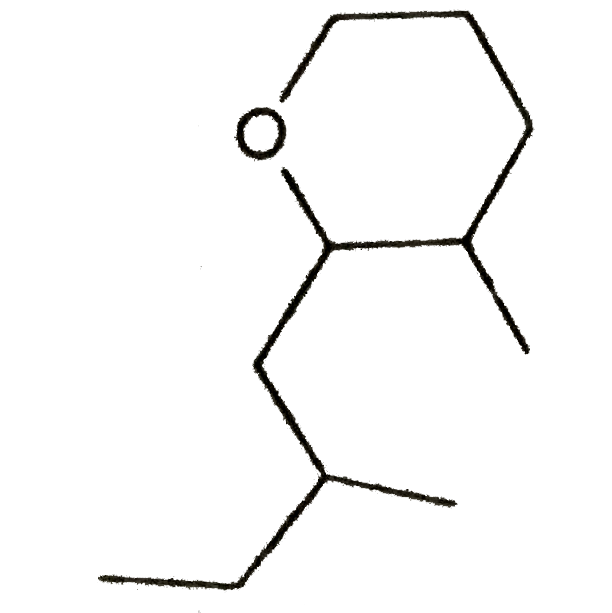The total number possible isomers for the complex compound [CuII(NH3)4[PtIICI4] are
5
6
3
4
The correct Answer is:D
To determine the total number of possible isomers for the complex compound (CuII(NH3)4)(PtIICl4), we will analyze the coordination isomers that can be formed by the ligands around the central metal ions.
1. Identify the Coordination Complexes:
- The complex consists of two parts: (CuII(NH3)4) and (PtIICl4).
- Copper (Cu) is coordinated with four ammonia (NH₃) ligands.
- Platinum (Pt) is coordinated with four chloride (Cl) ligands.
2. Understand Coordination Isomers:
- Coordination isomers are formed when the ligands around the metal centers are interchanged.
- In this case, we can interchange the ligands between the two metal centers (Cu and Pt).
3. List Possible Isomers:
- Isomer 1: (CuII(NH3)4)(PtIICl4) (4 NH₃ with Cu and 4 Cl with Pt)
- Isomer 2: (CuII(NH3)3Cl)(PtII(NH3)Cl3) (3 NH₃ with Cu, 1 Cl with Cu, 3 NH₃ with Pt, and 1 Cl with Pt)
- Isomer 3: (CuII(NH3)Cl3)(PtII(NH3)3Cl) (1 NH₃ with Cu, 3 Cl with Cu, 3 NH₃ with Pt, and 1 Cl with Pt)
- Isomer 4: (CuIICl4)(PtII(NH3)4) (4 Cl with Cu and 4 NH₃ with Pt)
4. Count the Isomers:
- From the above analysis, we can see that there are a total of 4 distinct coordination isomers possible for the given complex.
5. Conclusion:
- Therefore, the total number of possible isomers for the complex compound (CuII(NH3)4)(PtIICl4) is 4.
Final Answer:
The total number of possible isomers is 4.
- The complex consists of two parts: (CuII(NH3)4) and (PtIICl4).
- Copper (Cu) is coordinated with four ammonia (NH₃) ligands.
- Platinum (Pt) is coordinated with four chloride (Cl) ligands.
- Coordination isomers are formed when the ligands around the metal centers are interchanged.
- In this case, we can interchange the ligands between the two metal centers (Cu and Pt).
- Isomer 1: (CuII(NH3)4)(PtIICl4) (4 NH₃ with Cu and 4 Cl with Pt)
- Isomer 2: (CuII(NH3)3Cl)(PtII(NH3)Cl3) (3 NH₃ with Cu, 1 Cl with Cu, 3 NH₃ with Pt, and 1 Cl with Pt)
- Isomer 3: (CuII(NH3)Cl3)(PtII(NH3)3Cl) (1 NH₃ with Cu, 3 Cl with Cu, 3 NH₃ with Pt, and 1 Cl with Pt)
- Isomer 4: (CuIICl4)(PtII(NH3)4) (4 Cl with Cu and 4 NH₃ with Pt)
- From the above analysis, we can see that there are a total of 4 distinct coordination isomers possible for the given complex.
- Therefore, the total number of possible isomers for the complex compound (CuII(NH3)4)(PtIICl4) is 4.
The total number of possible isomers is 4.
Similar Questions
Knowledge Check
The total number of isomers for the compounds of the formula C4H10O are
A7B6C3D4
The total number of possibel coordination isomer for the given compounds [Pt(NH3)(4)Br2][PtBr4] is .
View SolutionTotal number of possible isomers of complex [Pd(NH3)2(SCN)2]
View Solution
The total number of optical isomers possible for this compound are?
View SolutionComplex compound [Cr(NCS)(NH3)5][ZnCl4] will be,
View SolutionHow many isomers are possible for the complex ion [Cr(NH3)3Cl3] ?
View SolutionTotal number of geometrical isomers for the complex [RhCl(CO)(PPh3)(NH3)] is
View SolutionComplex compound [Co(SCN)2(NH3)4]Cl exhibits:
View Solution
